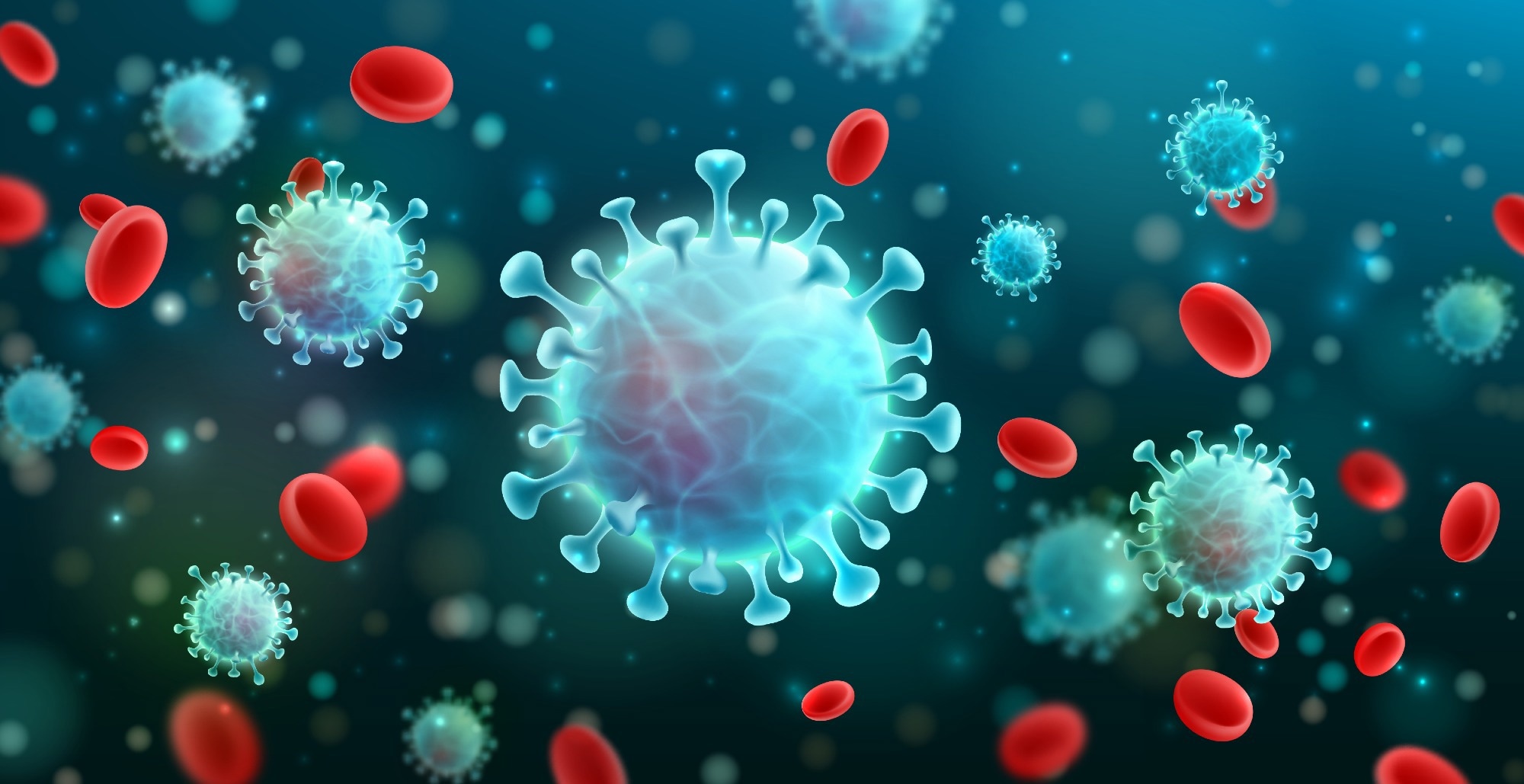In a recent pre-print uploaded to the medRxiv server, researchers inoculated 34 healthy volunteers with a pre-Alpha severe acute respiratory syndrome coronavirus 2 (SARS CoV-2) variant to elucidate the immune, viral and inflammatory events associated with coronavirus disease 2019 (COVID-19) infection.
The study's findings revealed the events accompanying the COVID-19 infection cascade in the nasal mucosa and free circulation. Results highlight the critically essential role of host viral recognition duration and subsequent response.
 Study: Mucosal and Systemic Immune Correlates of Viral Control following SARS-CoV-2 Infection Challenge in Seronegative Adults. Image Credit: Fotomay/Shutterstock.com
Study: Mucosal and Systemic Immune Correlates of Viral Control following SARS-CoV-2 Infection Challenge in Seronegative Adults. Image Credit: Fotomay/Shutterstock.com

 *Important notice: medRxiv publishes preliminary scientific reports that are not peer-reviewed and, therefore, should not be regarded as conclusive, guide clinical practice/health-related behavior, or treated as established information.
*Important notice: medRxiv publishes preliminary scientific reports that are not peer-reviewed and, therefore, should not be regarded as conclusive, guide clinical practice/health-related behavior, or treated as established information.
A need to better understand SARS-CoV-2
The SARS-CoV-2 virus has claimed the lives of over 6 million people and is estimated to be responsible for excess-pandemic-related mortality of over 18 million.
Government policies, including movement restrictions and widespread vaccination, have reduced severe outcomes. However, the virus's rapid mutation rate results in high transmission rates and new infections, even among vaccinated individuals.
While observational research on infected humans has been undertaken in the past, these studies cannot capture the incubation phase of viral infection, a pre-symptomatic period.
Observing innate immune responses during the early period of viral infection, especially in persons who successfully contained and eliminated the disease, could give researchers clues on how to identify better and treat COVID-19.
About the study
In the present pre-print, researchers began by screening healthy volunteers aged 18-30. Participants had no history of SARS-CoV-2 infection or vaccination. Study participants were inoculated with 10 Median Tissue Culture Infectious Doses (TCID50) of wild-type SARS-CoV-2.
All participants were tested through spirometry, electrocardiograms (ECG), blood, and other routine clinical assessments daily. Additionally, all patients underwent a computerized tomography (CT) scan on day five, and symptomatic patients retook the CT scan on day 10.
Researchers collected nasosorption samples and venous blood plasma daily to evaluate antibodies and mediators (peripheral and mucosal), respectively. MesoScale Discovery (MSD) immunoassays identified and quantified 35 chemo- and cytokine immune mediators. Enzyme-linked immunospot (ELISpot) and flow cytometry were used to identify antibody-secreting cells.
The model selection involved using multiple piecewise models to estimate disease growth, peak, decay, and initial activation times.
Statistical testing involved modified Mann-Whitney tests to compare soluble mediators and antibodies between infected and uninfected participants. A two-way analysis of variance (ANOVA) was used to verify the results.
Study findings
Of the 34 adults inoculated, 53% (18 individuals) developed the infection as observed from their viral loads (VLs).
"The first six infected participants received pre-emptive anti-viral treatment with Remdesivir immediately after the first two consecutive PCR detections; there was no difference in VL or symptom scores between those treated with Remdesivir and the later groups, and these groups were therefore analyzed together."
Viral load analyses revealed that the infection indicators surfaced earlier in the throat (1.78 days) than in the nose (2.61 days). Growth rates were identical between throat and nose, though the former reached VL peak almost two days earlier.
In contrast, VL decay was significantly slower in the throat than in the nose, resulting in viral clearance of the nose preceding that of the throat.
The systemic soluble mediator responses of the host to SARS-CoV-2 were found to be dominated by interferons (IFNs), with nasal IFN-α2a, IL-29 (IFN-λ) and IFN-y being significantly upregulated in infected patients.
Results from the blood plasma tests paint a similar story with IFNs, notably IFN-γ and the interferon-stimulated chemokine CXCL10 showing higher substantially higher expression than the expected baseline.
While most data suggest that the nasal responses predate identifiable triggers in circulation (blood), researchers were able to use single-cell RNA sequencing to identify some IFN responses that occurred earlier in the blood.
"Together, these data challenge the expectation that responses to respiratory viral infection invariably start in the mucosa to be followed by events seen in the circulation. Thus, diagnostic markers in the blood may, in fact, be a more sensitive early post-viral exposure test than were previously."
While IFNs have been previously identified in anti-viral immune response, the present research did not establish a correlation between IFN load and viral decline.
However, in the daily sample collection, in tandem with the mathematical modeling of quantitative and kinetic parameters, researchers were able to isolate the T-cell responses associated with declining VL. Results suggest that CD8+ T cells play a vital role in viral clearance.
Conclusions
In the present pre-print, researchers inoculated 34 volunteers with wild-type SARS-CoV-2 and monitored them daily to elucidate the progression of the innate immune response to early COVID-19 infection. The 18 individuals who developed COVID-19 symptoms formed the case-cohort, while the remaining 47% formed the control group.
Characterization of biomarkers, interferons, and cells associated with viral immune response, sampled daily, revealed that IFNs in the blood might be the earliest recognizable indicator of infection.
Viral load was found to generally start and peak earlier in the throat compared to the nose but then decay much slower, suggesting that the throat is a reliable indicator of infection progression.
T- and B Cell evaluation highlighted that CD8+ T cells are essential in viral clearance, limiting SARS-CoV-2 symptoms and transmission.

 *Important notice: medRxiv publishes preliminary scientific reports that are not peer-reviewed and, therefore, should not be regarded as conclusive, guide clinical practice/health-related behavior, or treated as established information.
*Important notice: medRxiv publishes preliminary scientific reports that are not peer-reviewed and, therefore, should not be regarded as conclusive, guide clinical practice/health-related behavior, or treated as established information.